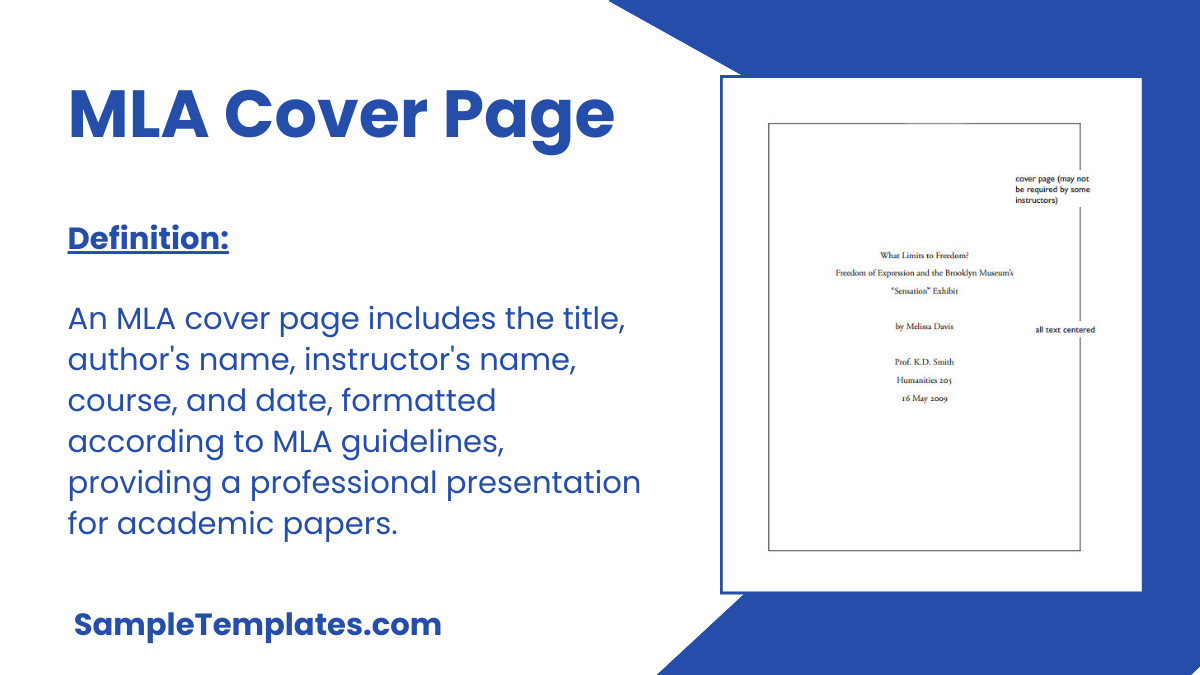The MLA styled cover page is a cover page of research papers which is formatted in MLA style i.e. the Modern Language Association style. If you want to design your MLA cover page template instantly, our sample website is here to offer you free templates.
Our templates are well designed and ready to be downloaded and printed. With the scope of minor and major editing in cover pages, we offer you good MLA cover page Log Templates without any cost. You need nothing more than downloading and editing the MLA cover page as per your requirement and print it for further use.
Simple Mla Cover page
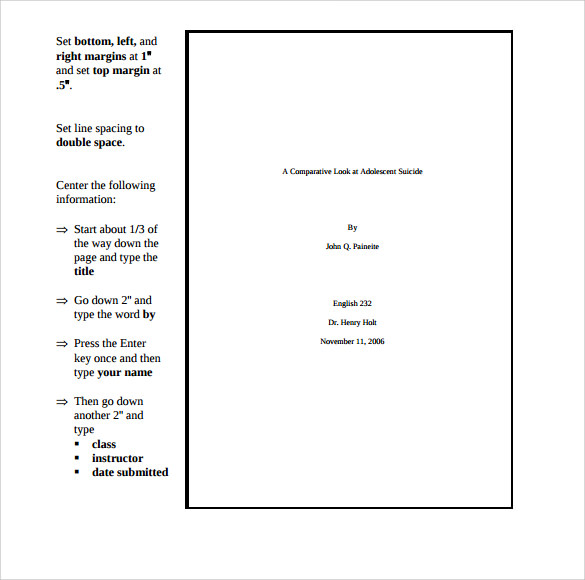
Basic Mla Cover page
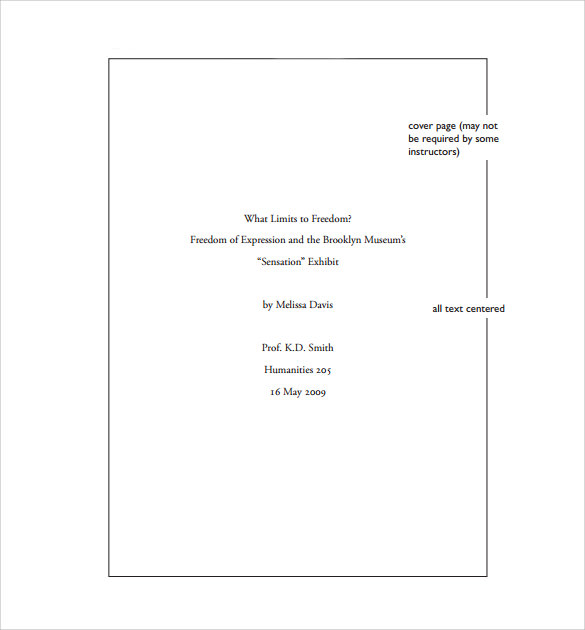
How To Create MLA Cover Page?
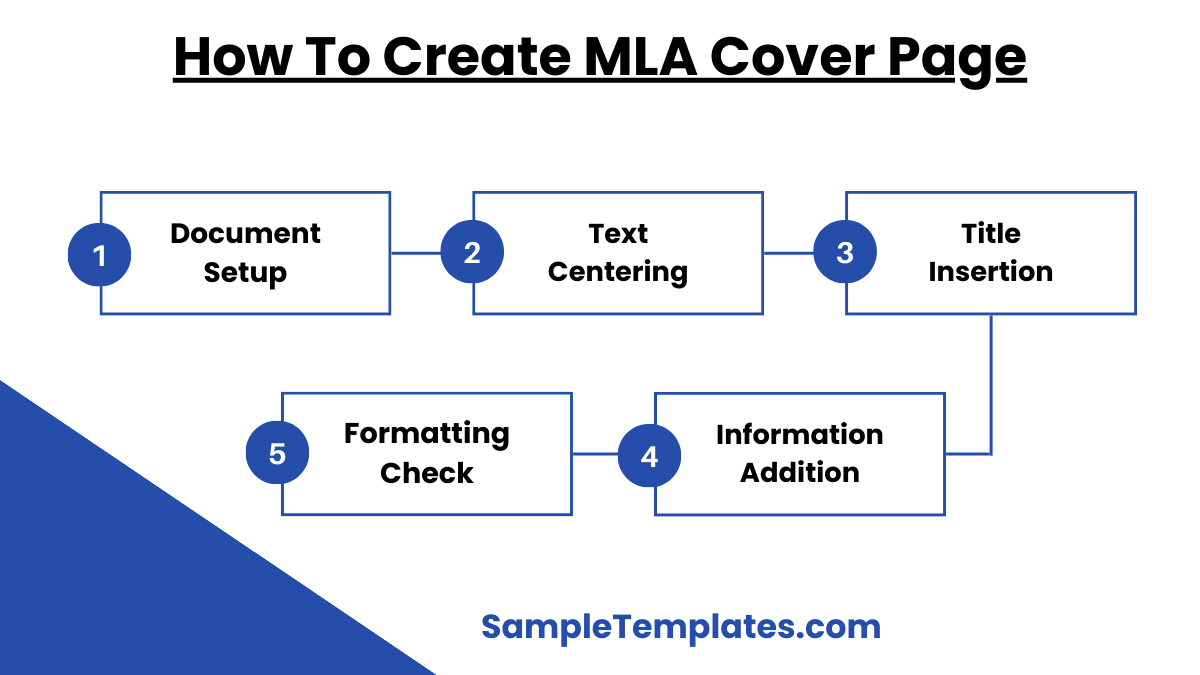
Creating an MLA cover page involves following specific guidelines to ensure your paper is presented professionally. Here’s a step-by-step guide:
Step-by-Step Guide to Creating an MLA Cover Page
- Set Up Your Document
- Open your word processing software (e.g., Microsoft Word, Google Docs).
- Use a standard, readable font like Times New Roman, 12-point size.
- Set 1-inch margins on all sides.
- Double-space the entire document.
- Center Your Text
- Center-align the text on the cover page.
- Include the Title
- Skip about one-third of the page.
- Type the title of your paper. Capitalize the main words and use standard capitalization rules (e.g., “The Impact of Social Media on Youth”).
- Avoid underlining, bolding, or italicizing the title.
- Add Your Information
- Double-space after the title.
- Type your name.
- Double-space after your name.
- Type your instructor’s name.
- Double-space after your instructor’s name.
- Type the course name or number.
- Double-space after the course name.
- Type the date (in the format Day Month Year, e.g., 10 June 2024).
- Ensure Proper Formatting
- Double-check that the text is double-spaced.
- Ensure all information is centered and follows MLA guidelines.
Example Mla Cover page
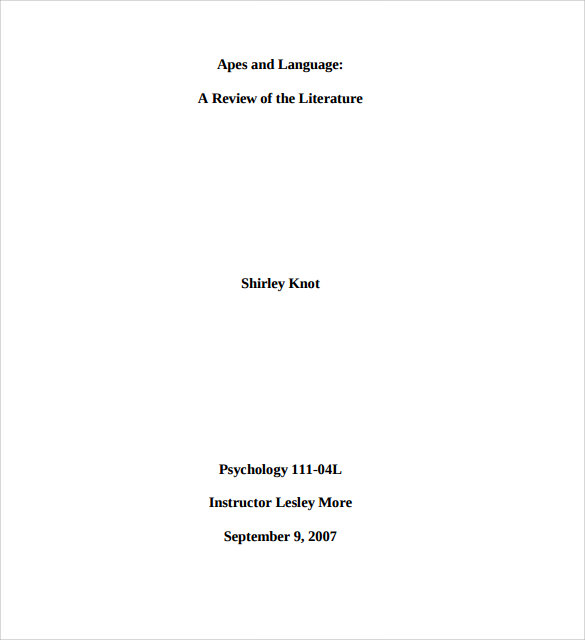
Download Mla Cover page
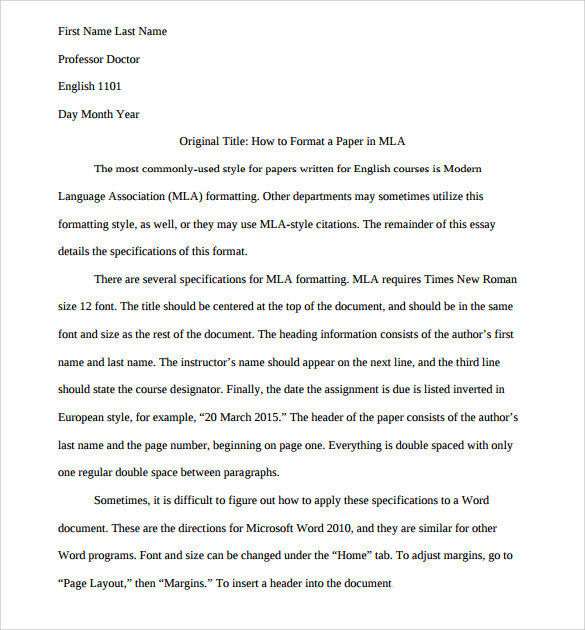
When to Use an MLA Cover Page?
An MLA cover page is typically used when an instructor or institution specifically requires one. The Modern Language Association (MLA) style generally does not require a cover page unless specified. Here are some scenarios when you might use an MLA cover page:
When to Use an MLA Cover Page
- Instructor Requirement
- If your instructor or professor explicitly asks for a cover page as part of the assignment guidelines.
- Institutional Requirement
- Some schools, colleges, or universities may have their own formatting requirements that include a cover page for all submissions.
- Formal Presentation
- When submitting a research paper or project for a formal presentation, a cover page can add a professional touch.
- Long Papers
- For lengthy research papers, theses, or dissertations, a cover page might be required to organize the document properly.
- Group Projects
- For group projects, a cover page can help clearly list all contributors’ names and other relevant information.
Checking for Requirements
- Assignment Guidelines: Always check the specific guidelines provided by your instructor or institution. They may have specific instructions about the use of a cover page.
- MLA Handbook: Refer to the latest edition of the MLA Handbook for any updates or specific formatting rules.
Summary
Use an MLA cover page when it is required by your instructor or institution, or when you believe it will add a professional touch to your document. Always check specific guidelines to ensure you are complying with the necessary requirements.
Sample Mla Cover page Format
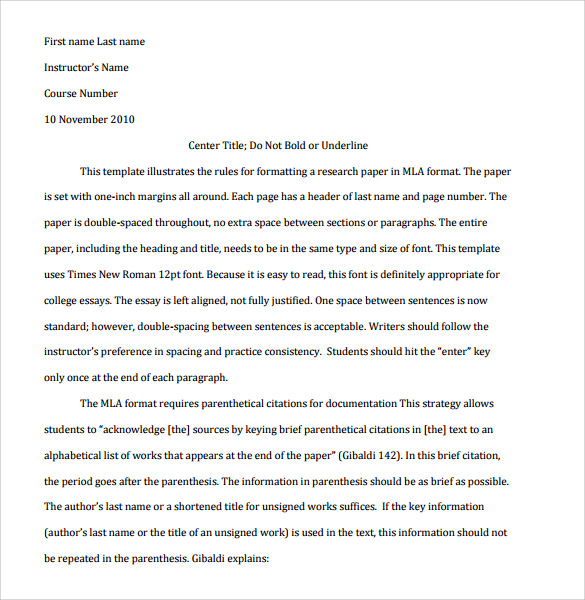
General Mla Cover page

Tips For Writing a MLA Cover Page
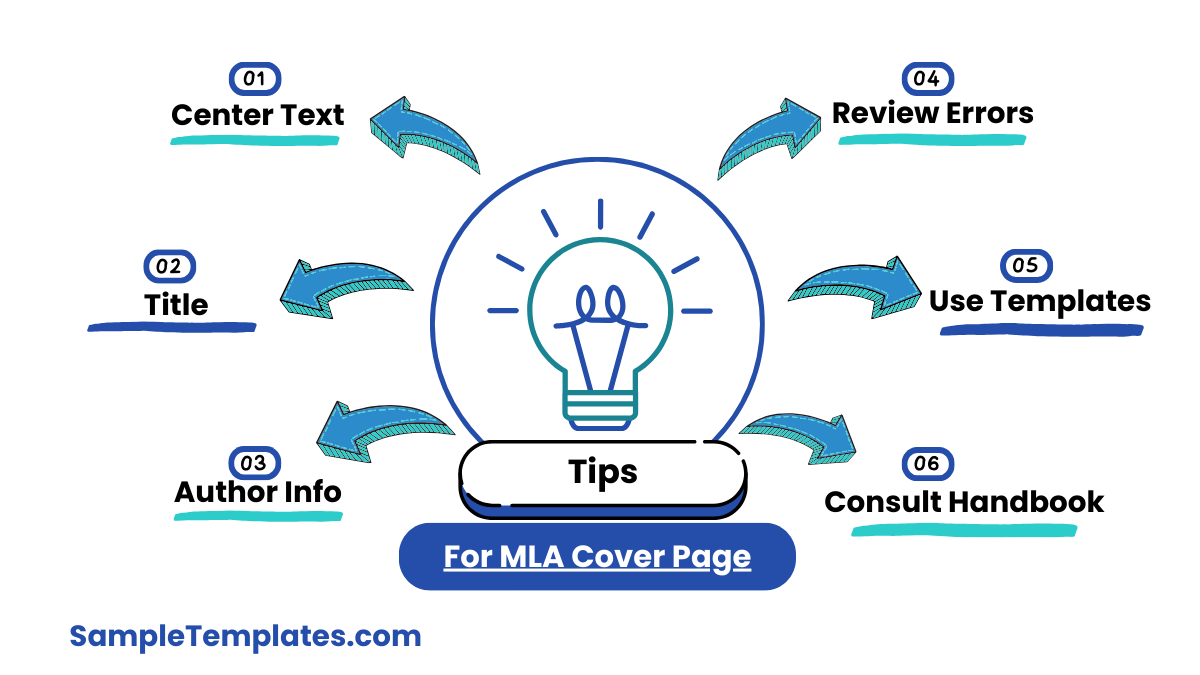
- Follow Formatting Guidelines
- Font: Use a standard, readable font like Times New Roman, 12-point size.
- Margins: Set 1-inch margins on all sides.
- Spacing: Double-space the entire cover page and the document.
- Center Your Text
- All text on the cover page should be center-aligned.
- Title
- Position: Place the title about one-third of the way down the page.
- Format: Capitalize the main words in the title using standard capitalization rules. Avoid underlining, bolding, or italicizing the title.
- Author Information
- Order: Below the title, double-space and then add your name.
- Instructor’s Name: Double-space again and add your instructor’s name.
- Course Information: Double-space and add the course name or number.
- Date: Double-space and add the date in the format Day Month Year (e.g., 10 June 2024).
- Review for Errors
- Proofread: Check for spelling and grammatical errors.
- Consistency: Ensure that all formatting is consistent and follows MLA guidelines.
- Use Templates
- Examples: Look for examples or templates online to guide you.
- Software Tools: Many word processing programs offer templates for MLA cover pages.
- Consult the MLA Handbook
- Refer to the latest edition of the MLA Handbook for any specific rules or updates.
- Avoid Decorative Elements
- Keep the cover page simple and professional. Avoid using decorative fonts, images, or colors.
- Clarity and Readability
- Ensure that all text is clear and readable. Use a standard font size and style.
- Instructor’s Preferences
- Always follow any specific instructions given by your instructor, as they may have particular preferences or requirements.
Standard Mla Cover page
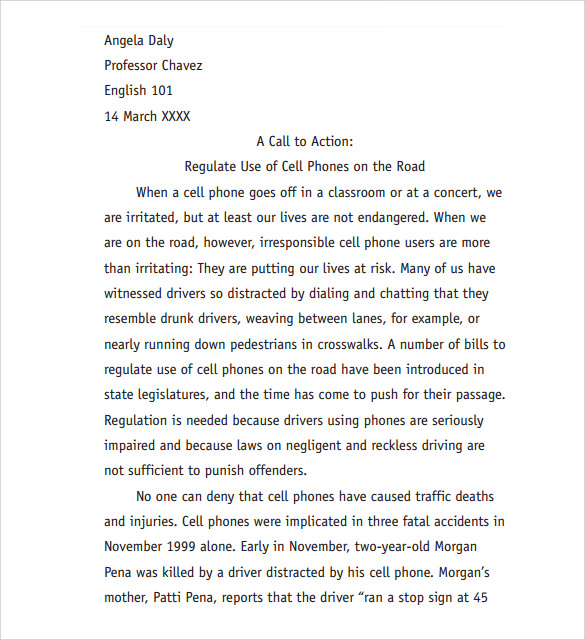
Does MLA require a cover letter?
MLA format does not typically require a cover letter unless specifically requested by your instructor or institution.
How to format MLA title?
Center the title, use standard capitalization, and avoid underlining, bolding, or italicizing. Place it about one-third down the page.
How to make a cover page?
Center-align all text, include the title, your name, instructor’s name, course, and date, double-spaced, using a standard font like Times New Roman, 12-point size.
In conclusion, a well-formatted MLA cover page is crucial for presenting academic work professionally. It includes essential details such as the title, author’s name, course, instructor, and date, ensuring clarity and adherence to academic standards. Proper formatting helps establish a positive first impression and maintains academic integrity.
If you have any DMCA issues on this post, please contact us!
Related Posts
Retirement Speech Samples & Templates
Weekly Schedule Samples & Templates
Contractual Agreement Samples & Templates
FREE 9+ Amazing Sample Church Bulletin Templates in PSD | PDF
Sample Business Card Templates
Sample Cashier Job Descriptions
Questionnaire Samples
FREE 10+ Sample HR Resource Templates in PDF
FREE 49+ Sample Job Descriptions in PDF | MS Word
FREE 23+ Sample Event Calendar Templates in PDF | MS Word | Google Docs | Apple Pages
Company Profile Samples
FREE 10+ Leadership Report Samples [ Development, Training, Camp ]
FREE 24+ Sample Payment Schedules in PDF | MS Word
FREE 10+ Return to Work Action Plan Samples in PDF | DOC
Autobiography Samples & Templates
